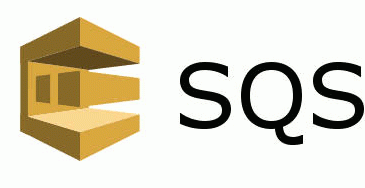
Categories
Problems that solves
Risk or Leaks of confidential information
No control over the state of communication channels
Separate communications channels
Risk of data loss or damage
Values
Ensure Security and Business Continuity
Reduce Costs
Amazon Simple Queue Service (SQS)
Amazon Simple Queue Service (SQS) - a fully managed message queues for microservices, distributed systems, and serverless applications.
About Product
Description
Amazon Simple Queue Service (SQS) is a fully managed message queuing service that enables you to decouple and scale microservices, distributed systems, and serverless applications. SQS eliminates the complexity and overhead associated with managing and operating message oriented middleware, and empowers developers to focus on differentiating work. Using SQS, you can send, store, and receive messages between software components at any volume, without losing messages or requiring other services to be available. Get started with SQS in minutes using the AWS console, Command Line Interface or SDK of your choice, and three simple commands.
SQS offers two types of message queues. Standard queues offer maximum throughput, best-effort ordering, and at-least-once delivery. SQS FIFO queues are designed to guarantee that messages are processed exactly once, in the exact order that they are sent.
FEATURES:
Queue types
Amazon SQS offers two queue types for different application requirements:
Standard Queues
Unlimited Throughput: Standard queues support a nearly unlimited number of transactions per second (TPS) per API action.
At-Least-Once Delivery: A message is delivered at least once, but occasionally more than one copy of a message is delivered.
Best-Effort Ordering: Occasionally, messages might be delivered in an order different from which they were sent.
You can use standard message queues in many scenarios, as long as your application can process messages that arrive more than once and out of order, for example:
Interaction with AWS KMS. When using the AWS Key Management Service to manage keys for SQS server-side encryption, you incur charges for calls from Amazon SQS to AWS KMS. BENEFITS: Eliminate Administrative Overhead AWS manages all ongoing operations and underlying infrastructure needed to provide a highly available and scalable message queuing service. With SQS, there is no upfront cost, no need to acquire, install, and configure messaging software, and no time-consuming build-out and maintenance of supporting infrastructure. SQS queues are dynamically created and scale automatically so you can build and grow applications quickly and efficiently. Reliably Deliver Messages Use Amazon SQS to transmit any volume of data, at any level of throughput, without losing messages or requiring other services to be available. SQS lets you decouple application components so that they run and fail independently, increasing the overall fault tolerance of the system. Multiple copies of every message are stored redundantly across multiple availability zones so that they are available whenever needed. Keep Sensitive Data Secure You can use Amazon SQS to exchange sensitive data between applications using server-side encryption (SSE) to encrypt each message body. Amazon SQS SSE integration with AWS Key Management Service (KMS) allows you to centrally manage the keys that protect SQS messages along with keys that protect your other AWS resources. AWS KMS logs every use of your encryption keys to AWS CloudTrail to help meet your regulatory and compliance needs. Scale Elastically and Cost-Effectively Amazon SQS leverages the AWS cloud to dynamically scale based on demand. SQS scales elastically with your application so you don’t have to worry about capacity planning and pre-provisioning. There is no limit to the number of messages per queue, and standard queues provide nearly unlimited throughput. Costs are based on usage which provides significant cost saving versus the “always-on” model of self-managed messaging middleware.
- Decouple live user requests from intensive background work: Let users upload media while resizing or encoding it.
- Allocate tasks to multiple worker nodes: Process a high number of credit card validation requests.
- Batch messages for future processing: Schedule multiple entries to be added to a database.
- Ensure that user-entered commands are executed in the right order.
- Display the correct product price by sending price modifications in the right order.
- Prevent a student from enrolling in a course before registering for an account.
- Unlimited queues and messages: Create unlimited Amazon SQS queues with an unlimited number of message in any region
- Payload Size: Message payloads can contain up to 256KB of text in any format. Each 64KB ‘chunk’ of payload is billed as 1 request. For example, a single API call with a 256KB payload will be billed as four requests. To send messages larger than 256KB, you can use the Amazon SQS Extended Client Library for Java, which uses Amazon S3 to store the message payload. A reference to the message payload is sent using SQS.
- Batches: Send, receive, or delete messages in batches of up to 10 messages or 256KB. Batches cost the same amount as single messages, meaning SQS can be even more cost effective for customers that use batching.
- Long polling: Reduce extraneous polling to minimize cost while receiving new messages as quickly as possible. When your queue is empty, long-poll requests wait up to 20 seconds for the next message to arrive. Long poll requests cost the same amount as regular requests.
- Retain messages in queues for up to 14 days.
- Send and read messages simultaneously.
- Message locking: When a message is received, it becomes “locked” while being processed. This keeps other computers from processing the message simultaneously. If the message processing fails, the lock will expire and the message will be available again.
- Queue sharing: Securely share Amazon SQS queues anonymously or with specific AWS accounts. Queue sharing can also be restricted by IP address and time-of-day.
- Server-side encryption (SSE): Protect the contents of messages in Amazon SQS queues using keys managed in the AWS Key Management Service (AWS KMS). SSE encrypts messages as soon as Amazon SQS receives them. The messages are stored in encrypted form and Amazon SQS decrypts messages only when they are sent to an authorized consumer.
- Dead Letter Queues (DLQ): Handle messages that have not been successfully processed by a consumer with Dead Letter Queues. When the maximum receive count is exceeded for a message it will be moved to the DLQ associated with the original queue. Set up separate consumer processes for DLQs which can help analyze and understand why messages are getting stuck. DLQs must be of the same type as the source queue (standard or FIFO).
- Work Queues: Decouple components of a distributed application that may not all process the same amount of work simultaneously.
- Buffer and Batch Operations: Add scalability and reliability to your architecture, and smooth out temporary volume spikes without losing messages or increasing latency.
- Request Offloading: Move slow operations off of interactive request paths by enqueing the request.
- Fanout: Combine SQS with Simple Notification Service (SNS) to send identical copies of a message to multiple queues in parallel.
- Priority: Use separate queues to provide prioritization of work.
- Scalability: Because message queues decouple your processes, it’s easy to scale up the send or receive rate of messages - simply add another process.
- Resiliency: When part of your system fails, it doesn’t need to take the entire system down. Message queues decouple components of your system, so if a process that is reading messages from the queue fails, messages can still be added to the queue to be processed when the system recovers.
- Pay only for what you use
- No minimum fee
- Standard Queue $0.40 ($0.00000040 per request)
- FIFO Queue $0.50 ($0.00000050 per request)
Interaction with AWS KMS. When using the AWS Key Management Service to manage keys for SQS server-side encryption, you incur charges for calls from Amazon SQS to AWS KMS. BENEFITS: Eliminate Administrative Overhead AWS manages all ongoing operations and underlying infrastructure needed to provide a highly available and scalable message queuing service. With SQS, there is no upfront cost, no need to acquire, install, and configure messaging software, and no time-consuming build-out and maintenance of supporting infrastructure. SQS queues are dynamically created and scale automatically so you can build and grow applications quickly and efficiently. Reliably Deliver Messages Use Amazon SQS to transmit any volume of data, at any level of throughput, without losing messages or requiring other services to be available. SQS lets you decouple application components so that they run and fail independently, increasing the overall fault tolerance of the system. Multiple copies of every message are stored redundantly across multiple availability zones so that they are available whenever needed. Keep Sensitive Data Secure You can use Amazon SQS to exchange sensitive data between applications using server-side encryption (SSE) to encrypt each message body. Amazon SQS SSE integration with AWS Key Management Service (KMS) allows you to centrally manage the keys that protect SQS messages along with keys that protect your other AWS resources. AWS KMS logs every use of your encryption keys to AWS CloudTrail to help meet your regulatory and compliance needs. Scale Elastically and Cost-Effectively Amazon SQS leverages the AWS cloud to dynamically scale based on demand. SQS scales elastically with your application so you don’t have to worry about capacity planning and pre-provisioning. There is no limit to the number of messages per queue, and standard queues provide nearly unlimited throughput. Costs are based on usage which provides significant cost saving versus the “always-on” model of self-managed messaging middleware.
Competitive products
Deployments with this product
User features
Roles of Interested Employees
Chief Executive Officer
Chief Information Officer
Organizational Features
Internet access is available for employees






















